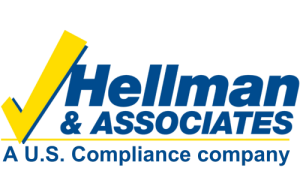Fires and explosions kill more than 200 and injure more than 5,000 workers each year in the work place. There is a long and tragic history of workplace fires in this country caused by problems with fire exits and extinguishing systems. OSHA requires employers to provide proper exits, fire fighting equipment, and employee training to prevent fire deaths and injuries. Below are the applicable regulations regarding fire prevention on construction sites. The checklist at the end is a self-inspection list that can be used to evaluate your workplace.
Fire Prevention
Internal combustion engine powered equipment shall be so located that the exhausts are well away from combustible materials. When the exhausts are piped to outside the building under construction, a clearance of at least 6 inches shall be maintained between such piping and combustible material.
Smoking shall be prohibited at or in the vicinity of operations that constitute a fire hazard, and shall be conspicuously posted: “No Smoking or Open Flame.”
Indoor Storage
Clearance shall be maintained around lights and heating units to prevent ignition of combustible materials.
Flammable or combustible liquids shall not be stored in areas used for exits, stairways, or normally used for the safe passage of people.
No more than 25 gallons of flammable or combustible liquids shall be stored in a room outside of an approved storage cabinet.
FLAMMABLE AND COMBUSTIBLE MATERIALS CHECKLIST
| Are approved containers and tanks used for the storage and handling of flammable and combustible liquids? (ex. Gasoline) |
| Is liquefied petroleum gas stored, handled, and used in accordance with safe practices and standards? |
| Are fire extinguishers selected and provided for the types of materials in areas where they are to be used? |
| – Class A Ordinary combustible material fires. |
| – Class B Flammable liquid, gas or grease fires. |
| – Class C Energized-electrical equipment fires. |
| Are appropriate fire extinguishers mounted within 75 feet of outside areas containing flammable liquids, and within 10 feet of any inside storage area for such materials? |
| Are extinguishers free from obstructions or blockage? |
| Are all extinguishers serviced, maintained and tagged at intervals not to exceed 1 year? |
| Are all extinguishers fully charged and in their designated places? |
